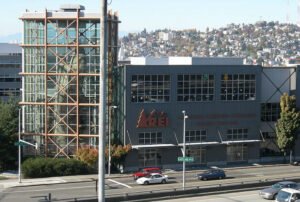

This article is the third article in our series—The Promise of Targeted Universalism: Community Leaders Respond—that NPQ is publishing in partnership with the national racial and economic justice nonprofit Prosperity Now. In this series, writers will examine how targeted universalism—a narrative framework that advocates the use of targeted approaches to achieve universal goals—can inform efforts to close the racial wealth gap, community by community.
To say that African Americans and Latinos need economic equity, doesn’t mean that the strategies we need for each group are going to be exactly the same. Unless we talk about those differences and use them to drive the strategy that makes sense, we are not going to get at what we need to do. —Manuel Pastor
Amid the upheaval caused by a global pandemic and the many inequities it has laid bare, the US finds itself at an inflection point. Before the nation lies a unique opportunity to build a more inclusive and equitable society. If the moment is not seized, the damage that follows could be irreparable.
The horrors of the past decade—family separation, immigrant children in cages, the countless murder of Black Americans captured on tape, the profiling of Muslim Americans (perceived or otherwise), hate crimes against Asian Americans, ongoing violation of Native lands, a failed response to the global COVID-19 pandemic, among others—have pushed increasing numbers of Americans to recognize that our current systems are failing us, and that radical change is necessary.
This growing understanding has created a rare opportunity to address centuries of structural inequality and design a system that works for far more people. Yet, the road to racial and ethnic economic justice will vary for different communities based on their unique needs; so too must policies, investments, and other interventions.
The notion of targeted universalism, I believe, offers a compelling approach for addressing racial and ethnic economic inequities in a way that is inclusive and sensitive to a complex reality. It offers people of all backgrounds and identities an opportunity to achieve universal goals through strategies that are targeted and customized to their diverse needs.
As a multiethnic, multiracial group with origins that span the globe and are situated across the socioeconomic spectrum, Latines1 are a microcosm of the United States and the world. While some Latine families are prosperous, many are low-income, and reside in some of the nation’s most polluted zip codes, are among the lowest paid laborers and face housing and financial insecurity. Overall, the Federal Reserve reports Latine households have only a fraction of the wealth held by “non-Hispanic white” households ($38,000 vs. $184,000); Latines are less likely to graduate from high school, hold a college degree, or have health insurance. This leaves many members of the Latine community especially vulnerable—both financially and medically—even as they have remained at risk on the front lines as essential workers during the COVID-19 pandemic.
Already the largest US ethnic group, the Latine community is on track to comprise nearly a third of the US population by 2060. Today, Latine account for one in four K-12 students. In short, it is a large and growing community that is certain to play an outsized role in the trajectory of the US economy and society. Nevertheless, according to a Foundation Center/Hispanics in Philanthropy report, US foundation funding intended to benefit Latines averaged a mere 1.3 percent from 1999 to 2009. More recent data is unavailable, but my experience trying to secure funding for a program that supported Latine organizations from traditional philanthropy from 2014 to 2020 would indicate that not much has changed. The profound underinvestment in Latine communities is difficult to comprehend given the size of the population and the impact it has on everyone.
According to a 2021 Latino Donor Collaborative report, the size of the overall U.S. Latine market measured by gross domestic product was $2.7 trillion in 2019. If the Latine community were its own country, it would be the seventh largest economy in the world, tied with France. Yet even though Latines start businesses at twice the average US rate, these businesses tend to start and stay small, creating an opportunity gap. Women head many of these. According to the US Census Bureau, nearly 1.6 million business are Latina-owned alone, reporting combined sales of $34.7 billion in 2017. The number of Latina entrepreneurs grew at a faster rate than any other group—137 percent between 2007 and 2016.
With Latine business formation outpacing all other new business creators, investment in helping them to scale is a smart, high-potential wealth- and job-creation strategy. I would also argue it’s a targeted universalism strategy that promises to advance the larger goal of promoting equity and improving the US economy for all Americans, by targeting a specific high-potential area. The actual strategies for how to get there will need to drill down to the local level and require an understanding of the evolving role Latines have played and continue to play.
The history of the US Latine community is complex. Many Latines didn’t cross the border, the border crossed them. Others arrived fleeing dictatorships, violence, and war—often caused by US interventions in the region. Yet others came looking for job opportunities or were recruited to work—some in manual labor as with the “Bracero program,” others in “skilled” advanced fields.
Hailing from throughout Latin America and the Caribbean, the Latine community is as varied as the ethnic heritage of their home countries. This includes Afro-descendant, Indigenous, European, Asian, Middle Eastern, and every possible combination of those. Their families brought with them rich cultural, culinary, literary, musical, and religious heritage, as well as many lingering effects of colonialism—including colorism, racism, sexism, and homophobia. Together, newer arrivals, and those already in North America before the English settlers arrived, came to comprise a new evolving racialized ethnicity and identity—Hispanic, Latino/Latina, Latinx, and more recently Latine.
Sign up for our free newsletters
Subscribe to NPQ's newsletters to have our top stories delivered directly to your inbox.
By signing up, you agree to our privacy policy and terms of use, and to receive messages from NPQ and our partners.
Such a diverse and complex tapestry of identities can seem overwhelming, but we cannot afford to throw our hands up. To achieve our desired outcomes, we must recognize that the barriers faced by a Latine in a border colonia may be different than those of a Latine who lives in Boyle Heights, or in Orlando. We can and must recognize these differences in designing optimal solutions to address the needs of community with community. For example, in the San Francisco Bay Area, José Quiñonez of Mission Asset Fund is helping Latine business owners in the region’s heavily Mexican-American community to access credit through tandas or lending circles—a common tool used by as many as a third of Mexicans in their home country—while helping them building credit histories here in the US.
At the Aspen Institute Latinos and Society Program that I directed prior to joining Prosperity Now, we found that Latine entrepreneurs not only lacked access to capital, but also access to networks, influencers, and ecosystem supports that could help them to grow their businesses. Mentoring and door opening were identified as central strategies as well as an ecosystem approach to helping Latine businesses scale up.
Advancing these and other solutions to Latine wealth creation will require understanding our communities’ needs and co-creating culturally competent community-led solutions to address them. Resources and investment required include:
1) Challenge prevailing harmful perceptions and stereotypes. In the past when I would tell people I ran a program focused on US Latinos and Latinas, the most common response I got was some comment related to immigration. Yet two thirds of Latines are born in the US and just 13 percent are undocumented. The narrative that Latines do not belong has dire consequences. Just look at the 2019 El Paso mass shooting.
2) Collect data to better understand different Latine communities across the country. It is very difficult to get data on, for example, the relationship of Latines to the criminal justice system when the justice department fails to adequately track it. We also need to disaggregate this data by race, ethnicity, and gender to better understand which groups may face additional hurdles. Shedding light on these and other blind spots would help to address structural challenges Latines confront. Importantly we need a mapping of Latine-led and Latine-serving organizations, Latine-owned banks, CDFI lenders and so on.
3) Support under-resourced Latine-led and Latine-serving organizations to do the work they do on the ground and in community. They are the ones in proximity to the challenges and best able to devise solutions with those they serve.
4) Build coalitions across race and ethnicity. This is difficult but necessary work. Systems of reward and penalty have often pitted different ethnicities against one another for limited resources, and understandably have led to a scarcity mindset. To do this authentically and in good faith, Latines must address our own internalized racism. While 24 percent of Latines identify as Afro-Latine, there is scarcely an Afro-Latine anchorperson or telenovela star that is not a domestic worker in the major Spanish language networks. Conversations within the Latine community about racism will likely make many uncomfortable, but we must not shy away from them.
For the large structural changes that we seek, we will need to work together across all communities affected. To do that, we must truly focus on the ways in which we are similarly impacted, while also respecting and valuing the ways we are different. Our struggles, particularly as Black and Brown people, are intertwined. It could be skin color, language, last name, zip code, lack of credit score, or ensnarement within the criminal justice system that prevent a Latine person from securing a loan to buy a house, the tools or encouragement necessary to pursue a degree, grow their business, or access other opportunities to thrive.
There is much that we can learn from each other. To break down the larger systems of oppression requires addressing the different ways that racial and class hierarchies play out in our communities. The strength of the targeted universalism is not that it provides a single answer, but rather that it offers communities a framework to come together around common goals of justice, even as we also acknowledge that the pathways to get there will vary community by community.
1. In this article, I use “Latine” in place of “Latinx.” Latine (la·ˈti·ne) is a gender-neutral form of the word Latino, created by LGBTQIA+, gender non-binary, and feminist communities and is used Spanish-speaking communities.









